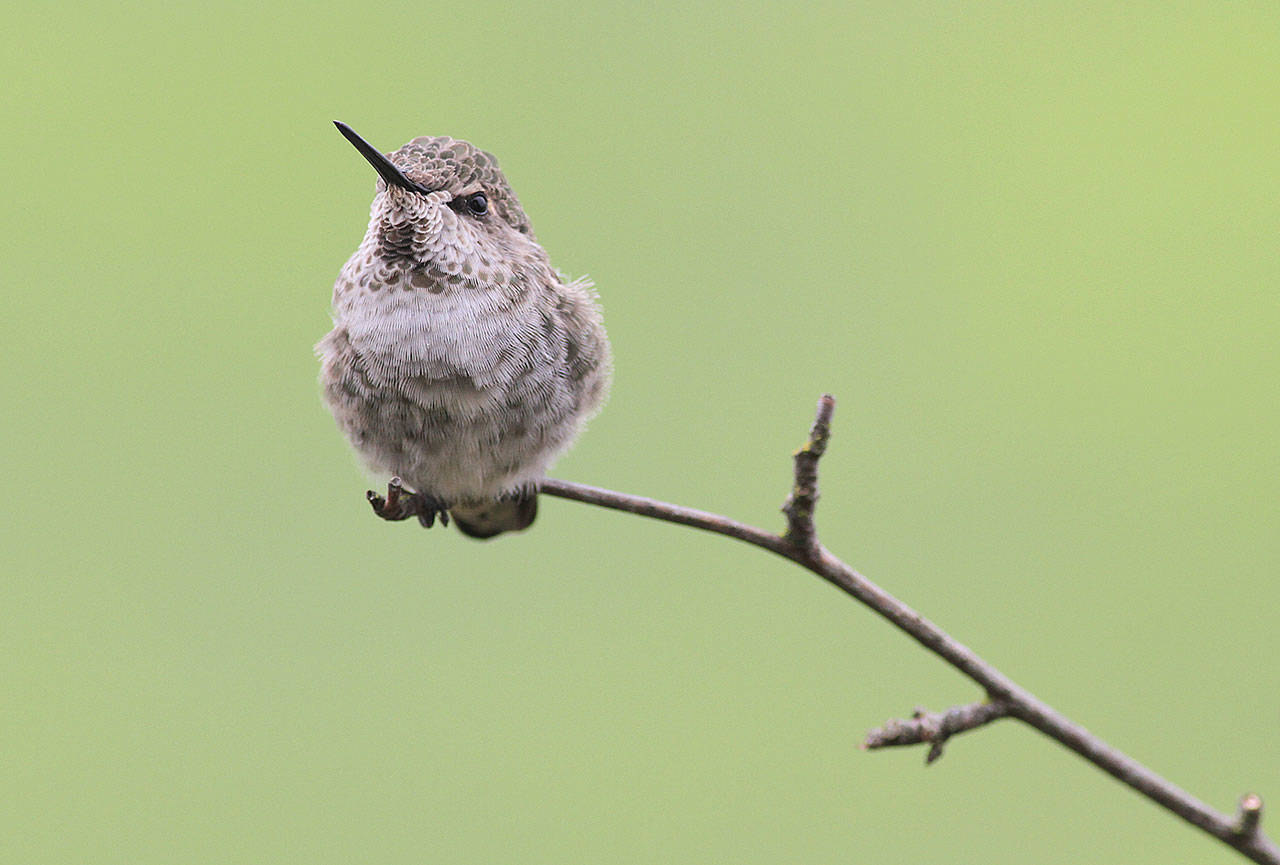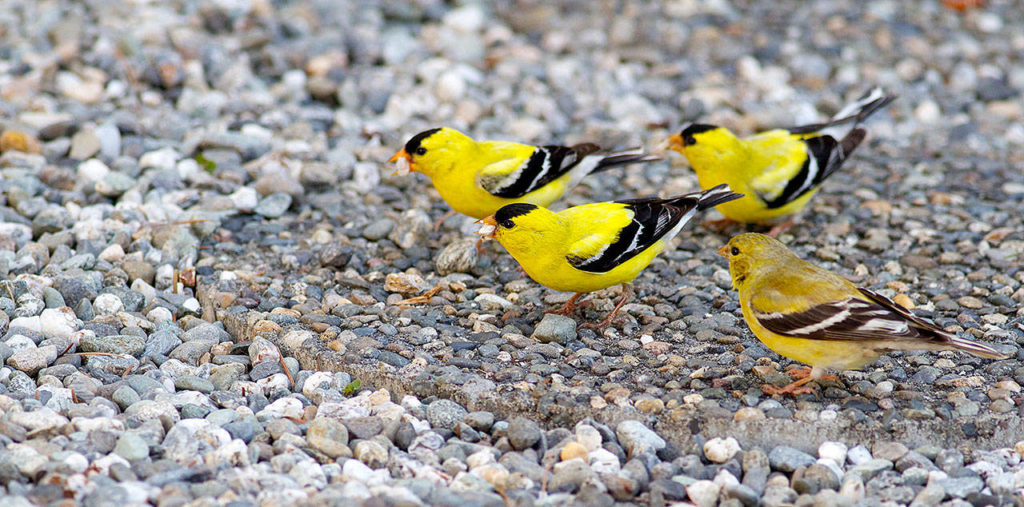When members of the Lawrence family need a little entertainment, all they have to do is to look out their window.
It helps that they live on Tulalip Bay, which has a variety of birds and other critters. Eagles, herons and kingfishers fly by year-round, looking for food. Ducks and geese use the bay as a winter home. Seals and sea lions show up when the salmon come in to spawn.
There are even the rare visitors, like pelicans or egrets.
The Lawrences don’t have a lot to do with the bay’s fish-focused wildlife. But they’ve worked pretty hard to attract common birds, butterflies, bees and other critters to their home.
“We love birds,” Inez Lawrence said.
“We love to sit on the deck and watch them,” added her husband, Dick Lawrence.
One of the major things the Lawrences have done to attract birds is to forego a lawn, choosing instead to plant a variety of flowers, bushes and small trees.
“Lawns are biological wastelands for anything except pests,” said Dave Pehling of the Washington State University Extension in Everett. Pehling is the extension service’s expert on pests. He’s also a beekeeper.
Getting rid of a lawn is a good first step to encouraging desired wildlife, Pehling said. Then he recommends planting “a ton” of flowers and fruiting plants to attract a variety of birds, butterflies, bees and other pollinators, noting that bumblebees like rough ground with tufts of grasses.
Barbara Lawrence, Dick and Inez’s daughter-in-law, said she keeps a laminated list of plants and what they attract in her car so she can refer to it whenever she visits a plant nursery.
While the Lawrences try to have a good variety of plants, Inez Lawrence said installing bird feeders has clearly been the most important thing her family has done to attract birds. They put out about 20 pounds of feed a week and provide about a cake of suet every day. There are also year-round feeders for hummingbirds.
“We’ve always fed them,” she said of the birds. “Last fall, we saw birds we haven’t seen for years, like red-winged blackbirds. I’m always astounded by the number of birds we have around.”
Pehling noted that rats can be attracted by feed dropped on the ground from bird feeders, so people who feed birds should keep an eye out for them.
In addition to bird feeders, people should also provide a variety of plants that offer seeds and fruit. “Fruit is good for birds,” Pehling said.
Pehling also said that people who attract wildlife and also want to have home gardens should be sure to protect those plants.
In addition to making sure birds have plenty to eat, Inez Lawrence said she always tries to provide water. “You have to have water for birds,” she said.
For most of the year, the Lawrences offer a small fountain. The fountain is shut down in winter, but there are also a number of containers that collect rainfall year-round.
In addition to food and water, thick shrubs are important for nesting birds, as are birdhouses. Some birds, like robins, need a platform to build a nest, Pehling said. Others, like raptors, just need a place to perch, he added.
“I encourage people to put up raptor perches, especially if they have problems with voles,” he said.
Sometimes, birdhouses go unoccupied. Other times, they’re used for something else. The Lawrences’ son, Mike, erected some houses on their dock to attract purple martins. While none have arrived yet, the houses were an immediate hit with kingfishers, which use the perches to scan for prey in the bay. Kingfishers typically don’t use birdhouses, choosing to nest in burrows they make along sandy banks.
Mike Lawrence plans to leave them their perches and add some condo-style houses that the martins might find more attractive.
Wildlife habitat
The state Department of Fish and Wildlife’s Backyard Wildlife Sanctuary program recommends these things to make your property wildlife-friendly:
Provide food: Install feeders and plant a good mix of plants that offer seeds, berries and flower nectar at different times of the year.
Provide water: Bird baths, dripping fountains, puddles and ponds are helpful.
Create shelter: Plant trees and shrubs and create brush and rock piles.
Offer space: Create corridors and open spaces.
For more information and recommendations of specific plants, visit the Backyard Wildlife Sanctuary program at wdfw.wa.gov.
More information
extension.wsu.ed: Click on “location” and “Snohomish County” to get information on classes, demonstration gardens and how to reach a master gardener.
snohomishcd.org: The Snohomish Conservation District offers a host of plants and information.
North Coast Magazine
This article is featured in the spring issue of Washington North Coast Magazine, a supplement of The Daily Herald. Explore Snohomish and Island counties with each quarterly magazine. Each issue is $3.99. Subscribe to receive all four editions for $14 per year. Call 425-339-3200 or go to www. washingtonnorthcoast.com for more information.
Talk to us
> Give us your news tips.
> Send us a letter to the editor.
> More Herald contact information.



























